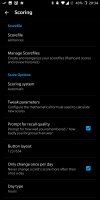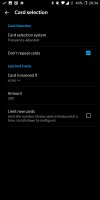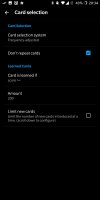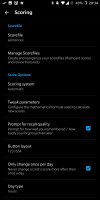Flashcard Set Name: Sentence Contextual Writing
Creator: @leguan
Credits: @Shun for providing most of the sentences that these flashcards are based on
Purpose: Test your ability to write the target character [普通话] based on the pinyin pronunciation [pǔtōnghuà] in the context of a complete sentence in Chinese.
Quantity: In excess of 20,000+ sentences!
Example: 他是中国人,但不会说 pǔtōnghuà.
Testing tiers:
1. Reading: Ability to understand the individual characters in Mandarin without pinyin.
2. Pronunciation: Ability to read out loud the entire sentence.
3. Gestalt: Ability to understand the overall meaning and context of the sentence. This ability ensures that the correct character is written as there are several Chinese characters with the same pinyin pronunciation.
This flashcard system is unique as it tests the following (in the above example):
1. The user is able to understand all 12 characters above and how they are used;
2. The user is able to write the target characters '普通话', meaning they are able to write and pronounce it as well.
3. This flashcard system takes a more top down approach to reviewing learnt characters. This is essential as it takes learning Chinese characters up a higher level where one focuses more on the context where the characters is used, rather on pure rote learning or brute force.
Required level: HSK 2 and above.
The list is now organized via levels from HSK 2-6 due to the hard work of @Shun.
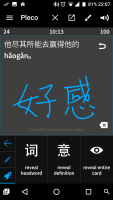
Installation method:
1. First, download the deck attached here.
2. In PLECO, go to the ‘Flashcards’ section, click on the sub-tab ‘Import/Export’.
3. Click ‘Import Cards’.
4. Under the ‘File’ section, choose file.
5. Go to the download directory and choose the ‘sentence_contextual_tatoeba_cn_eng_folded-ordered-by-hsk-ratings-2-6-txt.2946'
6. Click ‘Begin Import’.
7. Be patient and wait for the over 20K+ sentences to be imported.
8. After this, go to the ‘FLASHCARDS’ section in PLECO. Click on the ‘New Test’ tab.
9. Under the ‘Basic Settings’ click on the Max # of cards and click Endless.
10. Under the ‘Test Type’, click ‘Self-graded’.
11. Under the ‘Show’, click ‘Pron + Audio’
12. Under the ‘Test settings’,
* Click on ‘Reveal parts separately’
* Click on ‘Allow missing parts’
* Max audio replays to ‘Unlimited’
* Click on ‘Auto-play on show’
13. Under the ‘More settings’, click on ‘Commands’. Click on the ‘Show delete button’.
* Under the ‘Card selection’, click on:
* Card selection system to ‘Frequency-adjusted’
* Don’t repeat cards
* Amount 200
14. Under the ‘Scoring’, click on ‘Prompt for recall quality’ and ‘Only change once per day’.



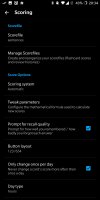
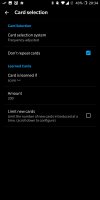
Addendum: Detailed explanation of usage by Leguan
The purpose of the flashcards is primarily to practice recalling and writing Chinese words in a way that simulates the process of recognizing the meaning of words from speech sounds in the context of complete sentences.
Each flashcard is therefore a sentence with the Chinese characters of the word to be tested replaced with the corresponding pinyin.
After configuring and beginning a "new test" with the parameters as per the attached screenshots, you will first be presented with a "sentence". Your goal is to read the sentence and handwrite the Chinese characters for the tested word shown in pinyin. If you can't recognize the tested word you can use the reveal definition to see the English translation as a hint.
After revealing the card you then self-grade yourself and proceed to the next card.
A secondary goal is to practice your reading comprehension and recollection of the pronunciation of each word in the sentence presented. When I use these cards I only give myself a remembered perfectly grade if I can recall and write the tested word without any hints AND correctly comprehend the meaning of the sentence AND correctly recall the pronunciation of each word in the sentence.
Mirror links at Chinese Forum and Reddit: Chinese Language respectively.
Creator: @leguan
Credits: @Shun for providing most of the sentences that these flashcards are based on
Purpose: Test your ability to write the target character [普通话] based on the pinyin pronunciation [pǔtōnghuà] in the context of a complete sentence in Chinese.
Quantity: In excess of 20,000+ sentences!
Example: 他是中国人,但不会说 pǔtōnghuà.
Testing tiers:
1. Reading: Ability to understand the individual characters in Mandarin without pinyin.
2. Pronunciation: Ability to read out loud the entire sentence.
3. Gestalt: Ability to understand the overall meaning and context of the sentence. This ability ensures that the correct character is written as there are several Chinese characters with the same pinyin pronunciation.
This flashcard system is unique as it tests the following (in the above example):
1. The user is able to understand all 12 characters above and how they are used;
2. The user is able to write the target characters '普通话', meaning they are able to write and pronounce it as well.
3. This flashcard system takes a more top down approach to reviewing learnt characters. This is essential as it takes learning Chinese characters up a higher level where one focuses more on the context where the characters is used, rather on pure rote learning or brute force.
Required level: HSK 2 and above.
The list is now organized via levels from HSK 2-6 due to the hard work of @Shun.

Installation method:
1. First, download the deck attached here.
2. In PLECO, go to the ‘Flashcards’ section, click on the sub-tab ‘Import/Export’.
3. Click ‘Import Cards’.
4. Under the ‘File’ section, choose file.
5. Go to the download directory and choose the ‘sentence_contextual_tatoeba_cn_eng_folded-ordered-by-hsk-ratings-2-6-txt.2946'
6. Click ‘Begin Import’.
7. Be patient and wait for the over 20K+ sentences to be imported.
8. After this, go to the ‘FLASHCARDS’ section in PLECO. Click on the ‘New Test’ tab.
9. Under the ‘Basic Settings’ click on the Max # of cards and click Endless.
10. Under the ‘Test Type’, click ‘Self-graded’.
11. Under the ‘Show’, click ‘Pron + Audio’
12. Under the ‘Test settings’,
* Click on ‘Reveal parts separately’
* Click on ‘Allow missing parts’
* Max audio replays to ‘Unlimited’
* Click on ‘Auto-play on show’
13. Under the ‘More settings’, click on ‘Commands’. Click on the ‘Show delete button’.
* Under the ‘Card selection’, click on:
* Card selection system to ‘Frequency-adjusted’
* Don’t repeat cards
* Amount 200
14. Under the ‘Scoring’, click on ‘Prompt for recall quality’ and ‘Only change once per day’.





Addendum: Detailed explanation of usage by Leguan
The purpose of the flashcards is primarily to practice recalling and writing Chinese words in a way that simulates the process of recognizing the meaning of words from speech sounds in the context of complete sentences.
Each flashcard is therefore a sentence with the Chinese characters of the word to be tested replaced with the corresponding pinyin.
After configuring and beginning a "new test" with the parameters as per the attached screenshots, you will first be presented with a "sentence". Your goal is to read the sentence and handwrite the Chinese characters for the tested word shown in pinyin. If you can't recognize the tested word you can use the reveal definition to see the English translation as a hint.
After revealing the card you then self-grade yourself and proceed to the next card.
A secondary goal is to practice your reading comprehension and recollection of the pronunciation of each word in the sentence presented. When I use these cards I only give myself a remembered perfectly grade if I can recall and write the tested word without any hints AND correctly comprehend the meaning of the sentence AND correctly recall the pronunciation of each word in the sentence.
Mirror links at Chinese Forum and Reddit: Chinese Language respectively.
Attachments
Last edited:

